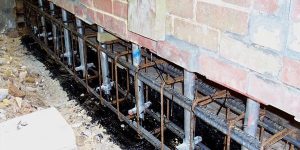Melbourne, with its vibrant arts scene and rich history, isn’t just known for its iconic laneways and coffee culture. Unfortunately, this dynamic city also grapples with a less celebratory feature: foundation subsidence. Many homeowners, unaware of this sneaky menace, find themselves searching for underpinning brick foundations solutions. But what causes this underground drama? Let’s unpack the mystery!

1. Soil Type and Variation:
Melbourne’s geographical diversity blesses it with a smorgasbord of soil types. From the clay-heavy areas to sandy pockets, each soil type responds differently to water. Reactive clay soils, especially, can expand when wet and contract when dry, leading to ground movement and, consequently, foundation issues.
2. Trees and Vegetation:
Who doesn’t love a leafy suburb? But trees, especially those with extensive root systems, can draw significant amounts of water from the soil, causing it to dry out and contract. If a tree is close to your home, its thirst could inadvertently be wreaking havoc on your foundation.
3. Leaking Plumbing:
A silent culprit, leaking pipes, especially those close to or underneath the foundation, can soften the ground. This can lead to soil erosion and, over time, create pockets of space where the foundation can sink.
4. Poor Drainage:
Melbourne’s occasional downpours mean that homes need effective drainage systems. Without them, water can pool around the foundation, saturating the soil. This could either make the soil swell (if it’s clayey) or wash it away (if it’s sandy or loamy).
5. Historic Ground Movement:
Older parts of Melbourne might have seen ground movement over the decades, either due to natural causes or previous construction activities. Homes built on such sites might be more prone to subsidence.
6. Insufficient Foundation Depth:
In some cases, foundations might not have been laid deep enough during construction. Over time, as the upper layers of soil undergo changes, such foundations can become unstable and start sinking.
Awareness is half the battle. Recognising these factors can aid in early detection and timely intervention. While underpinning is an effective remedy for foundation subsidence, homeowners can also consider preventive measures. Regularly inspecting your home for cracks, ensuring effective drainage, and even consulting with experts before planting large trees can make a world of difference.